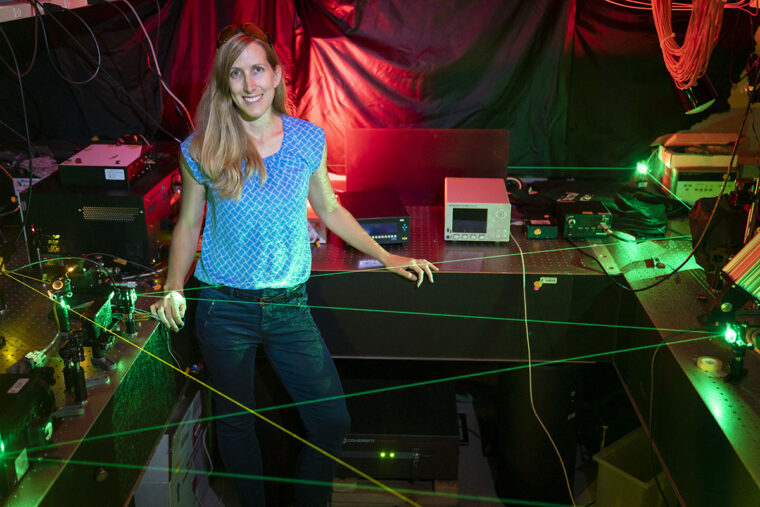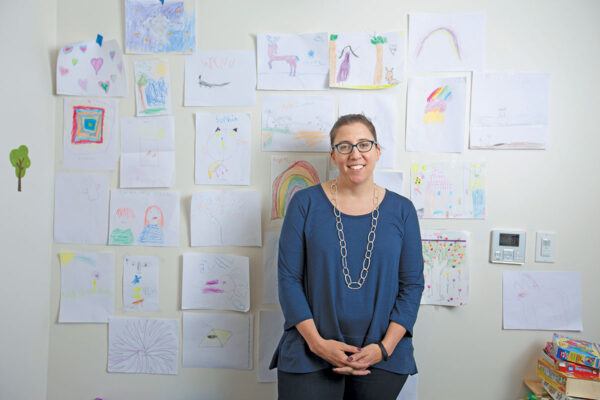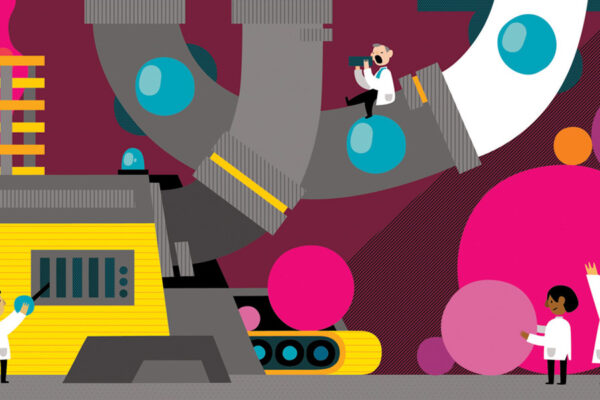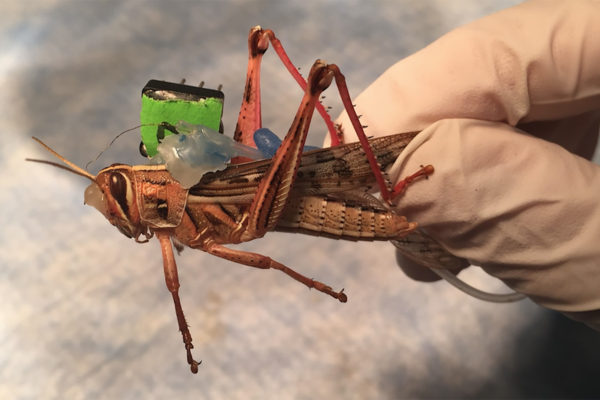Directly seeing the workings of our world at nano- and molecular scale has largely remained an impossible task, left to theory and working assumptions. WashU alumna Jennifer Dionne, BS ’03, has found a way around all that. Dionne is among the first scientists to successfully focus and manipulate light beyond the known diffraction limit.
What does all this mean for the future? According to Dionne, it could mean more effective pharmaceuticals and agrochemicals, more efficient photocatalysts for clean energy and even all-optical computing schemes that mimic the way our brain computes, but at the speed of light. Ultimately, Dionne hopes her technologies will help “enable a healthier population and a healthier planet.”
Dionne’s approach helps her view intricacies of molecular structure and molecular binding, which is particularly important for creating safe agrochemicals and pharmaceuticals. Adverse molecular binding in agrochemicals can cause them to leave residues in soil and lead to colony collapse in bees and organ failure in fish, birds and larger animals. In pharmaceuticals, it can give rise to delayed efficacy or deleterious
side effects. Dionne uses light to detect and sort molecules with the goal to eliminate adverse molecular binding, achieving greater precision and efficacy in pharmaceutical and agrochemical design.
Dionne is also using these light-based approaches to understand the basis of various diseases. “We’re hoping to understand how the immune system can be more effective in fighting off infection, including bacterial infections and cancer,” Dionne explains. “By visualizing reactions occurring on the nanoscale, like an immune cell fighting a pathogen or the response of a single bacterial cell to an antibiotic, we hope to develop better drugs and immune therapies.” For this work, Dionne recently received the National Institutes of Health Director’s New Innovator Award for exceptionally creative early career scientists.
Dionne also is applying photonic technology toward making more effective photocatalysts and renewable energy generation systems, with the goal of improving air and water quality and producing solar fuels.
This wide-ranging passion for discovery is nothing new for Dionne. Growing up in Rhode Island, she always sought adventure – whether doing obstacle courses with her neighbors, traveling to Australia as a junior ambassador or honing her early engineering skills at Space Academy. And at Washington University, she found her passion in science and math, and her search for knowledge was quickly taken to the next level.
“If I were to pick one thing that fostered how I am as a scientist, it would be the close-knit community WashU provided,” Dionne says. “It taught me how much you can learn by working as a team.”
The Washington University community impacted Dionne outside the classroom as well. She married Nhat Vu, BSEE ’03, one of her first-year floormates. Today, the couple has two young sons, ages 3 and 5.
During her sophomore year, she lived in the same dorm as University of Washington psychologist Kristina Olson, AB ’03, who like Dionne, became one of the few women awarded the National Science Foundation’s Alan T. Waterman Award for scientists under the age of 40. Olson won the prestigious award in 2018 (see this article in the September 2019 issue of Washington) and Dionne in 2019 — a remarkable back-to-back victory for Washington University women in the sciences.
Dionne’s light-based research will continue exploring the frontiers of molecular and nano-scale science for years to come. She says that even something as fanciful as Harry Potter’s invisibility cloak is certainly in the realm of possibility. It would involve “creating precisely arranged nanostructures that allow light to be steered around an object at every wavelength between 400 and 800 nanometers, the wavelengths corresponding to human vision.” But presently, Dionne’s focus remains the opposite — making the “invisible” visible and improving lives in a big way by observing the smallest possible scale.



